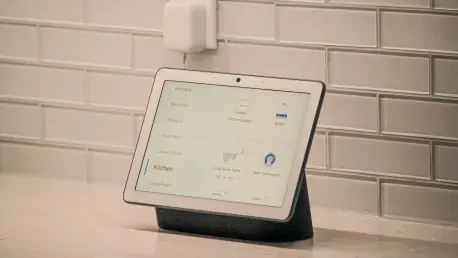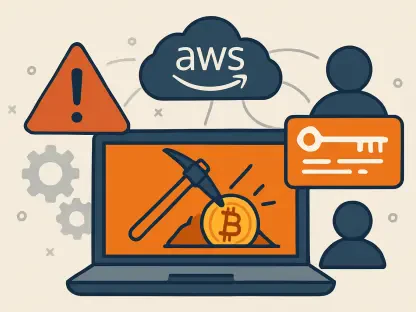In an era where smart homes have become an integral aspect of modern living, the urgency for robust cybersecurity practices has reached unprecedented heights. The RSA Conference 2025 underscored this growing concern, as industry experts converged to discuss strategies for securing home networks susceptible to cyber threats. The prevalence of smart devices, coupled with the increasing trend of remote work, has transformed domestic networks into attractive targets for cybercriminals aiming to breach corporate security measures. Given this reality, ensuring the cybersecurity of smart home ecosystems is not merely a precautionary step but an essential safeguard for protecting both personal and professional domains.
Cybersecurity Necessities for Smart Homes
As smart technology integrates more extensively into everyday life, the cybersecurity landscape must evolve to address the unique vulnerabilities associated with connected devices. At the RSA Conference 2025, discussions placed significant emphasis on the need for enhanced security frameworks to protect smart homes against emerging threats. The convergence of personal and professional spaces due to remote work has heightened the stakes for ensuring that home networks remain fortified against infiltration. Cybercriminals are leveraging the connectivity of smart homes to execute attacks that can compromise sensitive corporate data, making it imperative for users to recognize and mitigate these risks.
Remote work has blurred the lines between personal and professional environments, underlining the need for a comprehensive approach to cybersecurity. Many homes now function as extensions of corporate networks, facilitating a seamless work-from-home experience yet simultaneously broadening the attack surface for potential breaches. The repercussions of neglecting home network security were aptly demonstrated by the LastPass breach, where cybercriminals exploited vulnerabilities within personal networks to gain unauthorized access to invaluable corporate resources. This incident serves as a stark reminder of the intricate connection between personal and corporate security, prompting individuals and organizations alike to reevaluate their cybersecurity practices.
Understanding Smart Home Users
Effective cybersecurity strategies must account for the varying levels of technological engagement among different smart home users. During RSA 2025, Kim Key identified three primary categories: the low-tech lifer, the DIY home admin, and the hardened defender. Each group represents a distinct approach to technology and cybersecurity demands, necessitating tailored measures to ensure comprehensive protection. Recognizing these user profiles aids in crafting personalized security solutions that align with both individual needs and technical proficiency, ultimately fostering a more secure and resilient smart home ecosystem.
For the low-tech lifer, simplicity is paramount, as they typically possess limited technological acumen. Providing them with accessible yet robust security measures facilitates their ability to maintain a secure home network without overcomplicating the process. Meanwhile, the DIY home admin, equipped with a moderate level of technical knowledge, can delve deeper into cybersecurity practices and implement more complex solutions. The hardened defender, often comprising individuals whose visibility or position renders them potential targets, requires advanced and proactive security measures to address the heightened risks inherent in their circumstances. Understanding these distinct profiles allows for the application of relevant security practices that cater to the specific requirements of each user category.
Practical Security Recommendations for Beginners
For those categorized as low-tech lifers, ensuring cybersecurity within smart homes should not pose an insurmountable challenge. Straightforward yet effective measures, such as regularly updating passwords and firmware, can contribute significantly to buttressing their defenses against cyber threats. Although they might shy away from sophisticated configurations, implementing multi-factor authentication introduces an extra security layer that can deter potential breaches. Furthermore, familiarizing themselves with privacy risks associated with their smart devices empowers users to make informed decisions regarding their data and personal information.
Embracing simple yet impactful practices like avoiding default login credentials and recognizing phishing attempts can elevate a low-tech user’s security stance. By fostering a basic understanding of cybersecurity concepts, low-tech lifers gain the confidence needed to navigate the digital landscape securely. It is essential to communicate these recommendations clearly and concisely, enabling low-tech users to implement protective measures without overwhelming them with technical jargon. As they educate themselves about their devices’ vulnerabilities and possible privacy implications, they become increasingly adept at safeguarding their digital environments against malicious intrusions.
Advanced Strategies for the DIY Enthusiast
DIY home admins possess a deeper understanding of technology, allowing them to implement advanced strategies to secure their smart homes. Transitioning to Wi-Fi Protected Access 3 (WPA3) is a crucial step for these users, as it provides enhanced network encryption, making it significantly harder for cybercriminals to exploit wireless vulnerabilities. They are also encouraged to employ Virtual Local Area Networks (VLANs) and virtual networks, strategically segmenting their home setups to restrict unauthorized access to critical network resources.
For DIY admins, maintaining security often involves actively monitoring network traffic to identify irregularities that might indicate potential breaches. Utilizing a multi-faceted approach to securing devices, including deploying firewalls and keeping security software updated, strengthens the overall enforcement of cybersecurity measures. While these may seem daunting initially, many resources and guides are available that cater specifically to the DIY enthusiast, turning apparent complexities into manageable tasks. By investing time into understanding the inner workings of their digital ecosystems, DIY home admins bolster their homes’ defenses, guarding against the increasingly sophisticated strategies employed by cyber adversaries.
The Role of VPNs in Secure Networks
Another cornerstone of a secure home network lies in the application of Virtual Private Networks (VPNs), particularly for individuals who work remotely. VPNs serve as a crucial tool in shielding sensitive corporate information from cyber threats when connected to public Wi-Fi, providing a secure tunnel for data transmission by encrypting internet connections. This ensures that while accessing company resources, users maintain secure communications, preventing unauthorized parties from intercepting important data, whether at home or in public spaces.
For many remote workers, utilizing public Wi-Fi is a common practice, but it comes with its inherent risks. By deploying a VPN, users are better equipped to navigate the potential pitfalls associated with unprotected networks. A well-implemented VPN not only masks the user’s IP address but also encrypts all transmitted data, safeguarding it from malicious actors. This approach resonates particularly with professionals who routinely handle sensitive data, as it provides an additional layer of security against espionage and data breaches. The assurance of secure internet usage facilitated by a VPN is a testament to the necessity of remaining vigilant against cyber threats in an ever-evolving digital age.
Tailoring Security to Individual Needs
The importance of personalized cybersecurity measures cannot be overstated, as no single solution fits the diverse setups and expertise levels found in modern homes. Encouraging individuals to assess their unique circumstances and devise tailored security strategies is crucial in effectively countering cyber threats. Users should consider factors such as the number and type of smart devices, household composition, and even the structure of their physical space when developing a cybersecurity plan that seamlessly integrates with their lifestyle and technical capabilities.
By acknowledging the varied security needs among different users, experts are promoting a departure from one-size-fits-all solutions, advocating instead for more nuanced approaches. This empowers everyday users to take ownership of their digital safety, aligning security measures with individual living environments and personal aspirations. Taking the time to explore and understand device specifications, privacy implications, and broader technological trends enhances users’ ability to implement robust protective measures. The resulting safeguarding efforts ensure that users navigate their smart home ecosystems with confidence and foresight, adapting seamlessly to potential digital threats.
Continuous Learning and Adaptation
In today’s world, where smart home technology has seamlessly integrated into our daily lives, the need for strong cybersecurity measures has become more critical than ever. This was highlighted at the RSA Conference 2025, where industry leaders gathered to explore strategies for safeguarding home networks that have become increasingly vulnerable to cyber threats. The widespread use of smart devices, along with a growing trend in remote work, has turned domestic networks into tempting avenues for cybercriminals who aim to compromise corporate security systems. Given this evolving landscape, ensuring the cybersecurity of smart home ecosystems isn’t merely an optional precaution—it’s a critical necessity. It plays a vital role in protecting not only personal spaces but also professional environments from harmful intrusions. Securing these networks effectively ensures that both our private lives and work-related activities remain safe from any potential cyber threats that could disrupt our personal routines or professional responsibilities.









